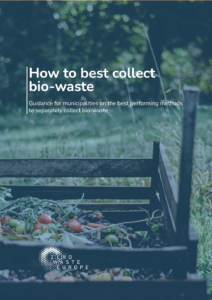

Guidance for municipalities on the best-performing methods to separately collect bio-waste
The EU’s Waste Framework Directive mandates that all Member States must separately collect bio-waste from 1st January 2024 onwards. With future recycling targets of 60 and 65% in the coming years, it is increasingly apparent that Member States must prioritise high-performing bio-waste collection models if they are to achieve the desired targets for recycling and the circular economy in Europe as a whole.
Ahead of this upcoming deadline, there is a growing risk of municipalities opting for cheaper, “easier” models that meet the required threshold of “separately collecting” organic waste, with the most common of these being large street containers/bins that municipalities sometimes opt for. With an urgent need to ensure that bio-waste collection systems are rolled out across the EU, as well as the wide range of economic, environmental and social benefits from effectively collecting bio-waste well, this paper has been designed to present key data on the performance of different collection systems for bio-waste from a variety of European regions and municipalities.
The data shown in this paper proves how door-to-door collection models for organics provide the best results – both for the quantity of material collected and the quality of such bio-waste. This guidance document also provides details on the key performance indicators for such systems, as well as a set of policy recommendations for municipalities who are seeking to implement high-performing organics collection systems in their communities. The results from this study are comprehensive – for any municipality wishing to collect high amounts of high-quality (low contamination) bio-waste whilst also saving costs, door-to-door collection is the proven best model for achieving such results.
Available in English, French, Italian, Portuguese, Ukrainian, Estonian, and Hungarian.